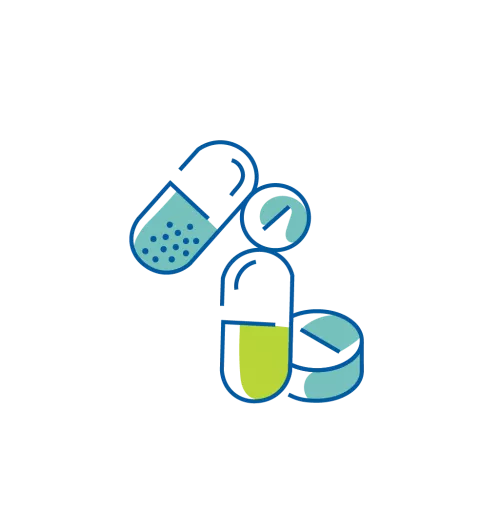
Minimal change disease

- Medically reviewed by
- AKF's Medical Advisory Committee
- Last updated
- March 31, 2025
Jump to
What is Minimal Change Disease (MCD)?
MCD is a condition that damages the tiny blood vessels in your kidneys (glomeruli) that clean your blood. MCD is called "minimal change" disease because the damage to the blood vessels is too small (minimal) for doctors to see under a regular microscope — so they must use a powerful device called an electron microscope.
MCD can happen in people of all ages, but it is more common in children than in adults.
What are the symptoms of MCD?
When you have MCD, you may notice these symptoms:
- Foamy, frothy or bubbly-looking urine (i.e., pee)
- Swelling in your hands, feet, belly or face
- Weight gain due to fluid your body cannot get rid of
- Feeling less hungry than normal
MCD can lead to nephrotic syndrome, a group of symptoms that shows your kidneys do not work as well as they should. These symptoms are:
- Too much protein in your urine
- Not enough protein in your blood
- High cholesterol (a waxy, fat-like substance in your blood)
MCD is the most common cause of nephrotic syndrome in children.
What causes MCD?
Doctors do not know exactly what causes MCD. In children, MCD often happens without any known cause or reason. This is called primary MCD. In adults, MCD may be related to a different disease or an event. this is called secondary MCD. Causes can include:
- An allergic reaction
- Use of certain painkillers called NSAIDs (nonsteroidal anti-inflammatory drugs)
- Tumors
- Certain viruses
How will I know if I have MCD?
Doctors may do tests to see how well your kidneys are working, such as:
- Urine tests to check for blood and protein in your urine
- Blood tests to check the levels of protein and cholesterol in your blood
- An eGFR blood test or kidney function test
A kidney biopsy, a procedure where doctors take a small piece of tissue from your kidney with a needle and look at it under a powerful microscope
The only way to know for sure if you have MCD is to do a kidney biopsy. MCD is the most common cause of nephrotic syndrome in children. Doctors often treat children for MCD when they show symptoms of nephrotic syndrome, so a child may not need a biopsy if their symptoms improve after treatment.
How do doctors treat MCD?

Doctors treat MCD with glucocorticoids ("steroids"). This helps to lower inflammation (swelling) in your kidneys which will help reduce the amount of protein in your urine.
While glucocorticoids are the primary treatment option for MCD, if you have side effects from steroid use talk with your doctor about alternative treatment options.
Your doctor may also recommend the following to help you manage the symptoms of MCD:
- ACE inhibitors to lower your blood pressure
- Diuretics (water pills) to help your kidneys get rid of salt and water and make you urinate more
- Sodium restriction is also recommended — this will help you decrease your body swelling and lower your blood pressure while waiting for the other medications to start to work.
MCD can be treated. Your doctor will do regular urine tests to monitor how your body is responding to treatment. Most people with MCD get better within a few weeks after starting treatment. This is called remission
Sometimes, MCD can come back months or even years after symptoms have stopped. This is called a relapse and is more common in children with MCD than in adults. However, most children outgrow MCD as they get older, with no lasting damage to their kidneys.
How can I prevent MCD?
The cause of MCD is not known, so there is no known way to prevent it. It is believed that some medicines like ibuprofen or naproxen (NSAIDs), among others, are associated with developing MCD. Talk to your doctor about any medicines that you are taking and if there are any you should avoid.

